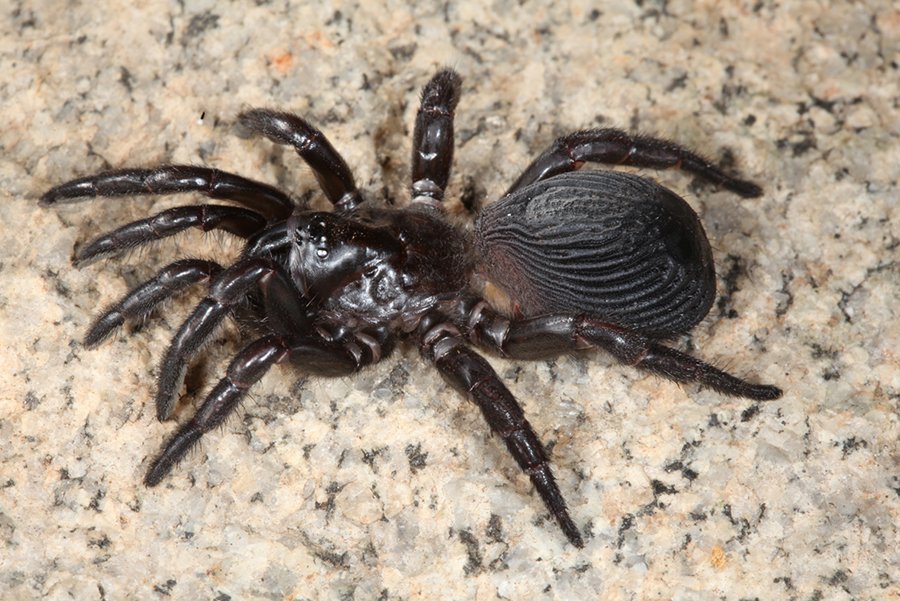Fourteen new trapdoor spider species described in WA

WA IS HOME TO 14 newly-described species of trapdoor spider, after a collaborative research effort to describe unnamed specimens from collections dating back to the 1950s.
Australia has the highest diversity of spiny trapdoor spiders – belonging to the family Idiopidae – in the world, however, many specimens remained unnamed.
Focusing on shield-backed trapdoor spiders (of the Idiosoma nigrum group), Dr Michael Rix from the Queensland Museum led a six year project to describe them – in conjunction with the WA Museum, SA Museum and the University of Adelaide.
See more: The truth about white-tail spiders
Previously, just two species in the group were described, including the only spider listed on both WA State and Commonwealth threatened species lists.
“The main driver in the first instance was that these spiders are really important for Environmental Impact Assessments,” Michael explains. “Some of their distributions were intersecting with proposed mining areas.”
“The need for names is very important in legislation – you need to know what they are before you can do anything tangible with conservation.”
The newly described spiders are found in remnant vegetation throughout WA’s central west, from the Swan Coastal Plain near Perth, to the Wheatbelt and Murchison regions.
The group share a distinctive burrow design, where they attach twigs to the entrance in a moustache shape, and are one of only a few groups of animals in the world to use their body as a defence mechanism.
See more: Australia’s 10 most dangerous spiders
“They are really interesting spiders, with amazing shields on their abdomen,” Michael says. “The skin or cuticle is strongly reinforced, and they actually wedge themselves into the entrance of their burrow to stop predators entering.”
Although their distribution is spread across the State, Michael says the spiders are fully restricted to patches of remnant vegetation.
“The most people are likely to see of them is their moustache-like burrows in conservation parks, or possibly a male when they are out looking for a mate,” Michael explains. “They won’t be in your backyard unless you have a unique property which backs onto a reserve.”

Idiosoma jarrah burrow. (Image Credit: Western Australian Museum)
Just named – already threatened
Of the fourteen species described from WA, two were added to the State’s threatened species list.
“WA’s semi-arid woodlands are some of the most threatened habitats, with a lot of the areas important for trapdoor spiders mostly cleared,” Michael says. “These spiders are just trying to cling onto existence – which is sad to see.”
Michael says the spiders play an important role in ground-level ecosystems as predators, and their presence is evidence of habitat health – if their populations are low, it may indicate a more serious issue.
See more: This sequined spider glistens in the light
In the future, there are plans to submit further applications to recognise more of the species as threatened, and begin work describing other groups of trapdoor spiders.
“We worked really long and hard and we’re stoked to see it out,” Michael explains. “We all care a lot about these spiders, and now that they are described and we know more about them, we can take that information forward.”

Female Idiosoma schoknechtorum. (Image Credit)
READ MORE:




